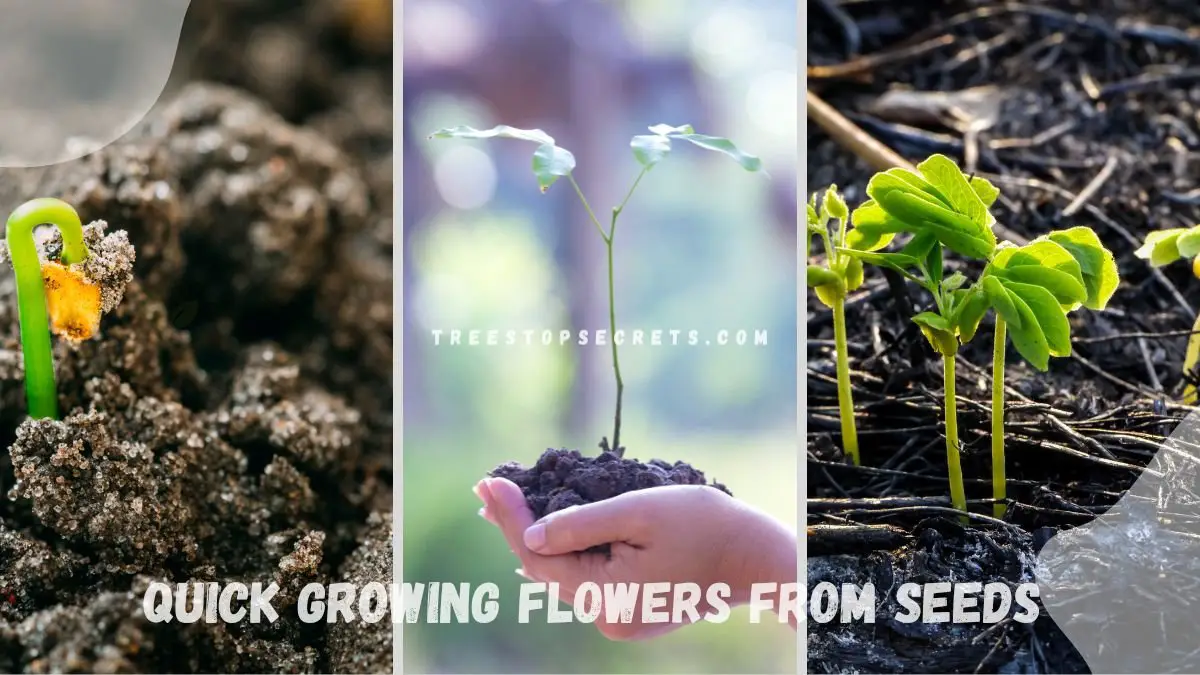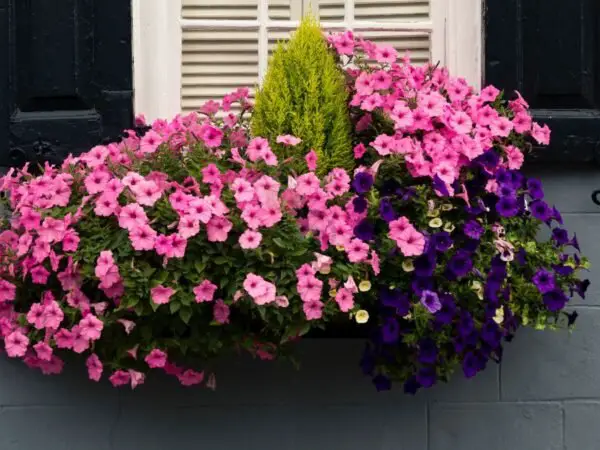Looking to add a burst of color to your garden in no time with flamboyant flowers? Ever wondered about the secrets of growing flowers quickly from seeds? Dive into our guide for expert tips on cultivating rapid-growing blooms straight from seed to full bloom. With our straightforward techniques, you can witness your garden transform into a vibrant oasis in just a few weeks. Ready to unlock the magic of nature and enjoy a kaleidoscope of hues right outside your door?
Key Takeaways
- Choose quick-growing flowers based on your preferences and the climate of your area.
- Consider popular quick-growing flowers like marigolds, zinnias, and sunflowers for vibrant blooms.
- Explore other fast-blooming options such as cosmos, nasturtiums, and sweet alyssum for variety in your garden.
- Don't forget special mention flowers like morning glories and forget-me-nots for unique and charming additions.
- Follow proper planting techniques and provide adequate sunlight, water, and soil conditions for optimal growth.
- Regularly care for and maintain your quick-growing flowers by deadheading, fertilizing, and monitoring for pests.
- Enhance the growth of your flowers by mulching, pruning, and providing support when needed.
- Enjoy the beautiful blooms of your quick-growing flowers throughout the season and consider saving seeds for future planting.
Choosing Quick-Growing Flowers
Seed Selection
When selecting seeds for quick-growing flowers, prioritize those with short germination times. Look for varieties that can bloom in 60 to 70 days under spring conditions. Opt for seeds that reseed easily with minimal intervention.
Season Timing
Plant the seeds of fast-growing flowers at the start of spring for early summer blossoms. Consider the flowers' frost tolerance when deciding on the timing of planting. Sow the seeds at the right time to capitalize on the cool spring weather.
Soil Prep
To foster healthy growth of quick-growing flowers, prepare soil that drains well. Amend the soil with organic matter to provide essential nutrients for the flowers. Ensure the soil is loose and fertile to support rapid germination and growth.
Sunlight Needs
Position quick-growing flowers in areas that receive full sunlight for optimal development. Ensure they receive 6-8 hours of sunlight daily. Take into account the specific sunlight requirements of each flower variety for the best outcomes.
Top Quick-Growing Flowers
Sweet Alyssum
Plant sweet alyssum seeds in well-drained soil under sunny conditions for optimal growth. Ensure to water the plants regularly to maintain continuous blooming. Embrace the delightful fragrance of sweet alyssum, particularly potent during the evening hours.
Calendula
Cultivate calendula in areas receiving full sun to partial shade, promoting its rapid development. Harness calendula's skin-healing properties for various beneficial applications. Take advantage of calendula's quick growth rate from seed, ideal for filling in garden spaces swiftly with flowers.
Johnny Jump-ups
Johnny jump-up seeds early in spring to witness their stunning blooms. Combine these vibrant flowers with spring bulbs for a visually striking garden display. Appreciate the resilience of Johnny jump-ups, enduring frosty conditions with ease.
Cornflowers
Grow cornflowers in well-drained soil exposed to full sunlight to support their growth. Delight in the edible petals of cornflowers and their calming effects. Observe bees being attracted to the tall stems of cornflowers during the early summer months.
More Fast Bloomers
Nigella
nigella seeds directly into the ground for quick growth. Admire the delicate flowers that bloom rapidly, adding beauty to your garden. Utilize infused nigella floral water, made from the flower, for various skincare and culinary benefits.
Nasturtiums
Plant nasturtium seeds in poor soil for vibrant blooms that emerge swiftly. Use nasturtiums as trap crops to protect surrounding plants from harmful pests naturally. Enjoy the unique peppery taste of nasturtium flowers, a delightful addition to salads.
Annual Phlox
Grow annual phlox in fertile, well-drained soil for optimal development and blooming. Provide support for tall varieties to prevent bending under their weight. Deadhead spent blooms regularly to stimulate continuous flowering throughout the season.
Petunias
Choose petunias for their extensive array of colors and patterns, perfect for adding vibrancy to your garden. Water petunias consistently to maintain moist soil conditions, crucial for healthy growth. Prune leggy stems of petunias to encourage bushier growth and more abundant flowering.
Special Mention Flowers
Poppies
Poppies are wonderful flowers that can be easily grown from seeds. Sow poppy seeds in early spring to witness their beautiful blooms during the summer season. The vibrant colors and delicate petals of poppies add a touch of elegance to any garden. Deadhead poppies regularly to encourage continuous blooming and prolong their flowering period.
Sunflowers
Sunflowers are the epitome of a perfect flower that grows rapidly from seeds. Plant sunflower seeds in soil rich in nutrients to help them grow tall with cheerful blooms. To prevent sunflowers from toppling over, provide support by using stakes. Once the sunflower heads have dried, it's time to harvest the seeds for future planting or consumption.
Planting Tips
Seed Sowing
When sowing seeds of quick-growing flowers, ensure you plant them at the right depth for successful germination. Keeping the soil moist post-sowing is crucial for healthy seedling development. For optimal results, start seeds indoors before moving them outside.
Watering Basics
To promote deep root growth in quick-growing flowers, water them deeply but infrequently. Avoid overhead watering to prevent fungal diseases that can harm your plants. Adjust the watering schedule based on the weather and individual plant requirements.
Fertilizing Needs
Quick-growing flowers benefit from a balanced fertilizer application throughout the growing season. Opt for organic fertilizers to support healthy growth without harsh chemicals. Tailor the fertilizer regimen to meet the specific needs of each flower type.
Care and Maintenance
Pruning Tips
Prune dead or damaged parts of quick-growing flowers to maintain plant health. Pinch back leggy growth for bushier plants. Sterilize pruning tools to prevent diseases.
Pest Control
Monitor quick-growing flowers for pests like aphids and caterpillars. Use neem oil or insecticidal soap for natural pest control. Attract ladybugs to help eliminate pests.
Disease Prevention
Ensure good air circulation around plants to prevent common flower diseases. Avoid overhead watering to reduce fungal infection risks. Remove infected parts promptly to stop disease spread.
Enhancing Growth
Mulching Benefits
Mulch around quick-growing flowers to keep soil moist and prevent weed growth. Organic mulches like straw or shredded leaves enhance soil quality. They also help in maintaining consistent soil temperature and safeguarding plant roots.
Pair quick-growing flowers with herbs such as basil to repel pests naturally. Integrate flowers that attract pollinators into vegetable gardens for increased yield. Utilize companion planting strategies to foster a diverse and mutually beneficial garden environment.
Enjoying Your Blooms
Harvesting Flowers
Harvest blooms early in the morning to benefit from their peak hydration levels, ensuring freshness. Cutting blooms at an angle enhances water absorption, extending their vase life significantly. To maintain bouquet longevity, eliminate any leaves submerged in water to prevent bacterial contamination.
Arranging Bouquets
Combine various quick-growing blossoms to create a vibrant and diverse bouquet that catches the eye. When arranging flowers, remember that odd numbers produce a more visually appealing composition. Display your stunning flower arrangements using a clean vase and fresh water to enhance their beauty.
Summary
In your quest for quick-growing flowers, you've learned how to select the best varieties, plant them effectively, and nurture them for vibrant blooms. From cosmos to zinnias, you now have a range of options that promise fast growth and beautiful blossoms. Remember the planting tips shared to ensure your flowers thrive, and don't forget the maintenance tips to keep them healthy. Enhance growth with the right care and enjoy the fruits of your labor as your garden transforms into a colorful oasis.
Now that you're equipped with the knowledge to cultivate quick-growing flowers successfully, put your newfound expertise into action. Get your hands dirty, plant those seeds, and watch nature work its magic in your garden. With a little effort and these valuable insights, you'll soon be surrounded by a stunning display of quick-growing flowers that will brighten up your outdoor space.
Frequently Asked Questions
Can I grow quick-growing flowers from seeds indoors?
Yes, you can start quick-growing flowers from seeds indoors. Use seedling trays or pots with a good potting mix. Provide adequate light, warmth, and moisture for successful germination and growth.
What are some top quick-growing flowers to consider planting?
Consider planting zinnias, marigolds, cosmos, sunflowers, and sweet peas for quick blooms. These varieties are known for their fast growth and vibrant colors, adding beauty to your garden in no time.
How can I enhance the growth of quick-growing flowers?
To enhance the growth of quick-growing flowers, ensure they receive sufficient sunlight, water them regularly but avoid overwatering, provide well-draining soil, and fertilize appropriately. Regular deadheading and pruning can also promote continuous blooming.
Do quick-growing flowers require special care and maintenance?
Quick-growing flowers generally require regular watering, occasional fertilization, pest control measures when needed, and deadheading to encourage continuous blooming. Monitoring for any signs of diseases or pests is essential for maintaining healthy plants.
When can I expect to enjoy blooms from quick-growing flowers planted from seeds?
Depending on the variety of quick-growing flowers you plant, you can expect to see blooms within a few weeks to a couple of months after sowing the seeds. Regular care and optimal growing conditions will help accelerate the blooming process.
Image Source: Paid image from CANVA




